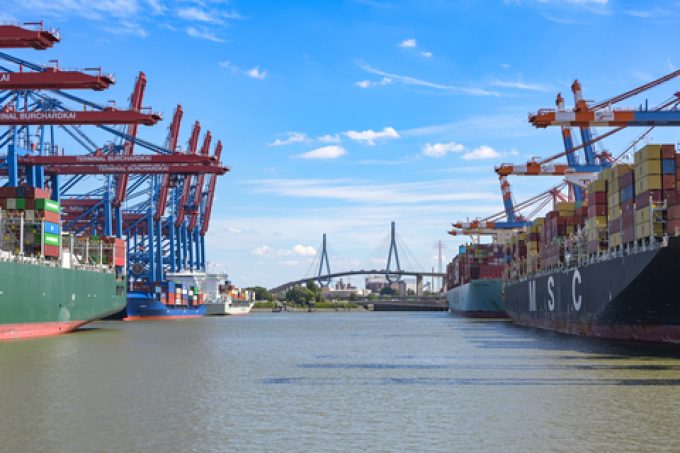Threat of rising oil price adds to frustration for crisis-hit supply chain chiefs
New warnings from the World Bank of surging oil prices, adding to the continuing instability ...

North European container ports are facing a potential capacity crunch in early February, as the armada of alliance vessels from Asia that have been re-routed around Africa reach the Channel.
There are a number of loops from Asia to North Europe that left their last load ports in Asia at the end of December which are showing revised ETAs at first North Europe discharge ports in early to mid-February, so there is bound to be a certain amount of ‘vessel bunching’, causing carriers to switch port rotations, or even consolidate operations at fewer hubs.
Vessel ETAs have been pushed back by 10 days or more, depending on whether voyages were paused, with alliance carriers fighting to secure arrival slots at hub terminals.
“The ports have our revised ETAs for the ships coming in via the Cape, but they also have ETAs from the two other alliances, so it’s going to be an interesting few weeks,” one carrier contact told The Loadstar.
However, he said he did not expect congestion to be nearly as bad as after the Ever Given blocked the Suez Canal in March 2021 for six days, which caused a tidal wave of delayed arrivals clashing with ships that had been diverted around the Cape of Good Hope.
“At that time, terminals were already chock-a-block full from the pandemic demand surge, the land side was stuffed and quayside work was painfully slow. But most of our hubs have been reporting very manageable utilisation levels of 60-70% of late, so if we can get on the berth, we should be able to turn the ships around pretty quickly,” he said.
Nevertheless, carriers are keeping a watchful eye on the situation in Germany, in case there is an escalation of industrial action, affecting intermodal operations for longer periods.
Ocean carriers, working with their alliance partners, are scrambling to put together a contingency plan for their networks that will enable them to regain time, enabling their ships to return to Asia ahead of their competitors.
As it stands, all westbound voyages from Asia are reported to be full until Chinese New Year, on 10 February, with some carriers indicating they are fully booked until the end of February.
This has, for instance, prompted South Korean carrier HMM to add extra loaders, which it says will operate outside its vessel-sharing membership of THE Alliance.
Indeed, with market rates going through the roof and said to be reaching $10,000 per 40ft for prompt shipments from China to North Europe, the deployment of smaller, ad-hoc tonnage by HMM and others will be highly lucrative.
Meanwhile, Sea-Intelligence CEO Alan Murphy said that, although carriers’ networks were “presently extremely volatile and prone to quick changes”, he believes that unlike during the pandemic disruptions, it would be wrong to call the enforced schedule changes a “disaster” for shippers and their supply chains.
Mr Murphy said that notwithstanding that the extra transit times resulting from the Suez Canal diversions were a “serious problem for many shippers”, the disruptions were “nowhere near those caused during the pandemic”.
Comment on this article